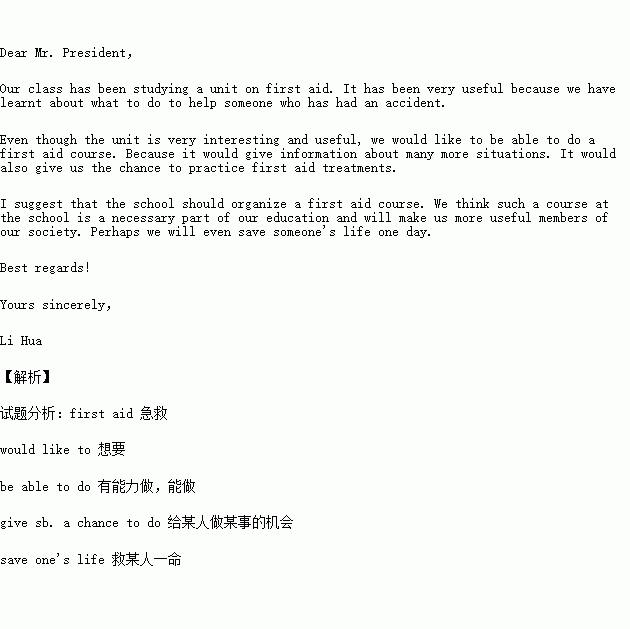��Ŀ����
���������������»���ѧ��ѧ������������Ӣ��ε�ij����Ԫ��ѧϰ��һЩ���ڼ��ȵ�֪ʶ���о������ã��뽨��ѧУ�ṩר�ŵļ��ȿγ̣��Ա�ѧ���˽�������֪ʶ�����ǣ����У��д��һ���š�Ҫ�����£�
1�����ȿγ����ã�
2����Ҫ���ε�ԭ��
3����Ľ��顣
ע�⣺1.����100���ң�
2�������ʵ�����ϸ�ڣ���ʹ�������
3����ͷ�ͽ�β��Ϊ��д�ã����������ܴ�����
Dear Mr. President��
Our class has been studying a unit on first aid.___________________________________
___________________________________________________________________________
___________________________________________________________________________
___________________________________________________________________________
___________________________________________________________________________
Yours sincerely��
Li Hua
��ϰ��ϵ�д�
�����Ŀ


